| States | Hawaii 2003 Cross Country |
| |
||||||||||||||||||||||||||||||||||
|
||||||||||||||||||||||||||||||||||
 Donna on the Side in Hawaii for the 5th Iolani Invitational Sep 20, 2003 at Kualoa Ranch, Oahu HI |
 |
|
| Part 1 Honolulu | Part 2 Warming Up | Part 3 Race Day | Part 1 Blue water, coconut palm trees, surfing in the sunshine! It's Paradise! |
|||||||||||||||||||||||||||||||||||||||||||||||||||||||||||||||||||||||||||||||||||
The Royal HistoryThe Hawaiian culture begins with a group of Polynesians from the South Pacific settling on the islands after the birth of Christ. But the islands weren't "Hawaii" until 1795 when Kamehameha I unified them into a kingdom and established a monarchy. He and his family ruled until 1872 and were followed by other families. Intermarriage outside of the royal family was permitted. As a result some of the royal family married influential business and civic leaders creating a blend of cultures and families that is very common in Hawaii.
|
| Bishop Museum |
|||
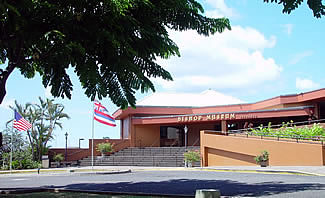 |
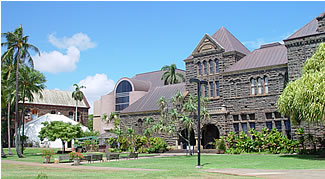 |
||
 |
On the grounds of the Bishop Museum sits a replica of a moai donated by the Japanese government. |  |
Some of the exhibits at the museum tell a sweet tale. The Bishop Museum tells the story of Chocolate in Hawaii. |
| The new and old meet in the downtown area. Many historical and government buildings are mingled together. | |||
| The Royal Grounds |
|||
| Iolani Palace, the only royal palace in the US was completed in 1882. It later served as the territorial and state capitol until the 1960's. | In the shadow of the modern buildings, the Palace Guardhouse now used as the Visitor's Center. |
||
 |
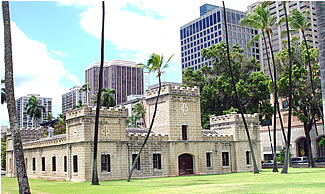 |
||
| Historic Trail |
|||
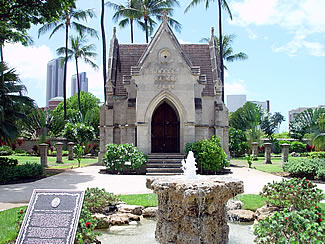 |
Burial site of King William Charles Lunalilo (1835-1872) The People's King wanted to be buried in the common cemetary. He refused to name a successor and insisted that the choice of the next monarch be up to the people. | ||
| Kawaiahao Church--The Great Stone Church. Built in 1841 it is the oldest church in Honolulu. It was the chapel to the Hawaiian monarchs and was the site of royal inaugurations, weddings and funerals. The building is constructed from giant coral slabs. The slabs were quarried from under water by the natives. Each slab weighed more than a 1000 pounds. Natives dove 10-20 feet and hand chiselled these pieces from the reef. There are about 14,000 of these slabs in the church. |  |
||
| Mission House Museum. Three buildings that date back to the 19th century where the first Christian missionaries first lived and worked. | |||
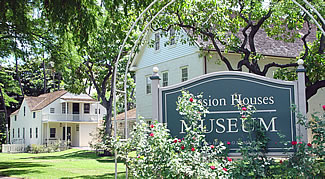 |
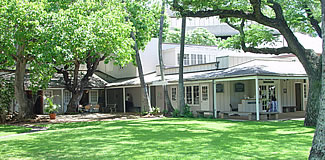 |
||
| More Sites |
|||
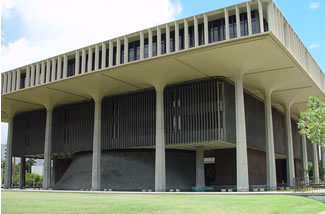 |
The Hawaii State Capitol. Opened in 1969, the building houses the offices of the Governor, Lieutenant Governor and the state legislature, the structure symbolizes elements of Hawaii. The conic shape of the legislative chambers represents volcanoes, the 40 pillars encircling the building represent the native royal palm trees, and the water surrounding the structure is symbolic of the Pacific. | ||
| The Honolulu Hale or City Hall. Built in 1928, this is a landmark structure that reflects the California-Spanish architectural design popular in the islands during the 1920's. | 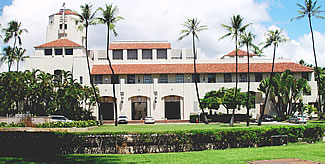 |
||
The military-past and present-maintains
a presence on Oahu. |
|||
 |
Hawaii hosts the headquarters for the commander U.S.
Pacific Fleet. |
||
| Reminders of Pearl Harbor attack are very visible in the area: Battleship Missouri, USS Bowfish Submarine (Pearl Harbor Avenger) Museum and the Arizona Memoria. | |||
 |
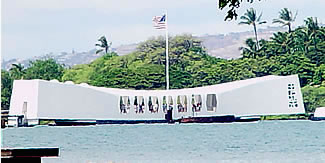 |
||
| Trees on the Iolani Palace Grounds |
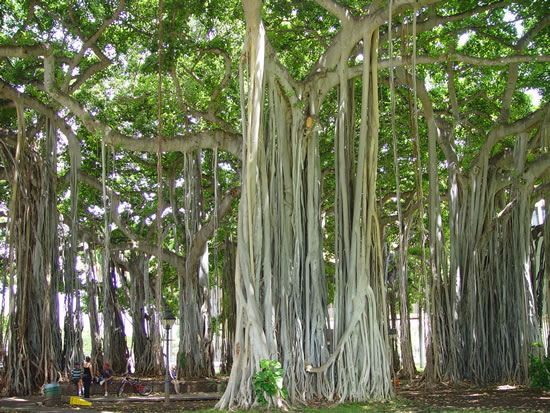 |
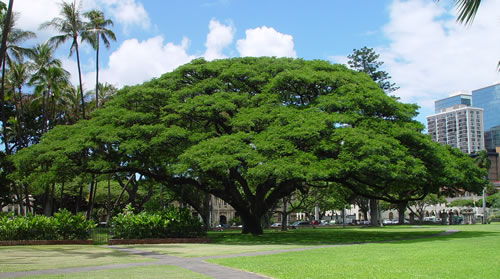 |
DyeStat �1998-2004 |
 |